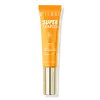What's inside
What's inside
 Key Ingredients
Key Ingredients

 Benefits
Benefits

 Concerns
Concerns

 Ingredients Side-by-side
Ingredients Side-by-side

Hydrogenated Polyisobutene
EmollientButyrospermum Parkii Butter
Skin ConditioningEthylhexyl Palmitate
EmollientOctyldodecanol
EmollientSynthetic Wax
AbrasiveParfum
MaskingLithospermum Erythrorhizon Root Extract
Skin ConditioningSorbitan Isostearate
Emulsifying1,2-Hexanediol
Skin ConditioningCaprylic/Capric Triglyceride
MaskingPersea Gratissima Fruit Extract
EmollientGluconolactone
Skin ConditioningMandelic Acid
AntimicrobialGlycerin
HumectantOrbignya Oleifera Seed Oil
EmollientEthylene/Propylene Copolymer
AbrasiveCaprylyl Glycol
EmollientEthylhexylglycerin
Skin ConditioningPalmitoyl Tetrapeptide-7
Skin ConditioningSphingolipids
EmollientWater
Skin ConditioningCeramide NP
Skin ConditioningLactic Acid
BufferingBenzyl Benzoate
AntimicrobialHydrogenated Polyisobutene, Butyrospermum Parkii Butter, Ethylhexyl Palmitate, Octyldodecanol, Synthetic Wax, Parfum, Lithospermum Erythrorhizon Root Extract, Sorbitan Isostearate, 1,2-Hexanediol, Caprylic/Capric Triglyceride, Persea Gratissima Fruit Extract, Gluconolactone, Mandelic Acid, Glycerin, Orbignya Oleifera Seed Oil, Ethylene/Propylene Copolymer, Caprylyl Glycol, Ethylhexylglycerin, Palmitoyl Tetrapeptide-7, Sphingolipids, Water, Ceramide NP, Lactic Acid, Benzyl Benzoate
Diisostearyl Malate
EmollientBis-Diglyceryl Polyacyladipate-2
EmollientTridecyl Trimellitate
EmollientPolybutene
Hydrogenated Polyisobutene
EmollientButyrospermum Parkii Butter
Skin ConditioningMicrocrystalline Wax
Emulsion StabilisingIsostearyl Alcohol
EmollientSynthetic Wax
AbrasiveSilica Silylate
EmollientEthylene/Propylene/Styrene Copolymer
Carthamus Tinctorius Seed Oil
MaskingCurcuma Longa Root Extract
MaskingCaprylic/Capric Triglyceride
MaskingCitrus Sinensis Peel Extract
PerfumingCitrus Aurantium Dulcis Peel Extract
Emulsion StabilisingPanax Ginseng Root Extract
EmollientButylene/Ethylene/Styrene Copolymer
Tocopheryl Acetate
AntioxidantPolyglyceryl-2 Triisostearate
EmulsifyingSodium Saccharin
MaskingDehydroacetic Acid
PreservativeButylene Glycol
HumectantAroma
Limonene
PerfumingCitral
PerfumingCinnamal
PerfumingBenzyl Benzoate
AntimicrobialLinalool
PerfumingBHT
AntioxidantAluminum Hydroxide
EmollientCI 77891
Cosmetic ColorantCI 19140
Cosmetic ColorantCI 15985
Cosmetic ColorantDiisostearyl Malate, Bis-Diglyceryl Polyacyladipate-2, Tridecyl Trimellitate, Polybutene, Hydrogenated Polyisobutene, Butyrospermum Parkii Butter, Microcrystalline Wax, Isostearyl Alcohol, Synthetic Wax, Silica Silylate, Ethylene/Propylene/Styrene Copolymer, Carthamus Tinctorius Seed Oil, Curcuma Longa Root Extract, Caprylic/Capric Triglyceride, Citrus Sinensis Peel Extract, Citrus Aurantium Dulcis Peel Extract, Panax Ginseng Root Extract, Butylene/Ethylene/Styrene Copolymer, Tocopheryl Acetate, Polyglyceryl-2 Triisostearate, Sodium Saccharin, Dehydroacetic Acid, Butylene Glycol, Aroma, Limonene, Citral, Cinnamal, Benzyl Benzoate, Linalool, BHT, Aluminum Hydroxide, CI 77891, CI 19140, CI 15985
Ingredients Explained
These ingredients are found in both products.
Ingredients higher up in an ingredient list are typically present in a larger amount.
Benzyl Benzoate is usually created from the condensation of benzoic acid and benzyl alcohol. It is used as a preservative, solvent, and has a floral/balsamic scent in large amounts.
As a preservative, Benzyl Benzoate works against bacteria and fungus. It is often used to treat scabies and lice in medicine.
Solvents are used to keep ingredients together in a product. They can help dissolve ingredients to stable bases or help evenly distribute ingredients throughout the product.
Due to its fragrance, Benzyl Benzoate can be sensitizing and may cause contact dermatitis. It is a known EU allergen. We recommend speaking with a professional if you have any concerns.
Benzyl Benzoate can be naturally found in cranberries and peaches.
Learn more about Benzyl BenzoateThis ingredient is also known as shea butter. It is an effective skin hydrator and emollient.
Emollients help soothe and soften your skin. It does this by creating a protective film on your skin. This barrier helps trap moisture and keeps your skin hydrated. Emollients may be effective at treating dry or itchy skin.
Shea butter is rich in antioxidants. Antioxidants help fight free-radicals, or molecules that may harm the body. It is also full of fatty acids including stearic acid and linoleic acid. These acids help replenish the skin and keep skin moisturized.
While Shea Butter has an SPF rating of about 3-4, it is not a sunscreen replacement.
Shea butter may not be fungal acne safe. We recommend speaking with a professional if you have any concerns.
Learn more about Butyrospermum Parkii ButterThis ingredient is an emollient, solvent, and texture enhancer. It is considered a skin-softener by helping the skin prevent moisture loss.
It helps thicken a product's formula and makes it easier to spread by dissolving clumping compounds.
Caprylic Triglyceride is made by combining glycerin with coconut oil, forming a clear liquid.
While there is an assumption Caprylic Triglyceride can clog pores due to it being derived from coconut oil, there is no research supporting this.
Learn more about Caprylic/Capric TriglycerideHydrogenated Polyisobutene is a synthetic polymer. Polymers are compounds with high molecular weight. Hydrogenated Polyisobutene is an emollient and texture enhancer.
In one study, Hydrogenated Polyisobutene showed better skin hydration levels than Caprylic/Capric Triglyceride. As an emollient, it helps keep your skin soft and hydrated by trapping moisture in.
Hydrogenated Polyisobutene is often used as a mineral oil replacement.
Learn more about Hydrogenated PolyisobuteneSynthetic Wax is created from fossil fuels such as natural gas. It is used to enhance texture, adjust pH, and as an occlusive.
It may also be used as an abrasive ingredient to exfoliate the skin.
Synthetic Wax may not be fungal acne safe.
Learn more about Synthetic Wax